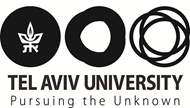The Molecular Biology of Dental Surgery

Surgical procedures are often developed empirically and refined through clinical studies, but ethical constraints limit their study in humans. In our laboratory, we adopt a "chair-to-bench" approach, translating advanced dental surgeries from human practice into mouse models. This strategy leverages transgenic animals to precisely map the molecular and cellular events underlying repair processes after dental interventions. Our current projects focus on improving sinus lift procedures, treatments for peri-implantitis, and alveolar bone repair following periodontal disease.
Functions of Biomineralization Proteins in Bone Healing

Craniofacial bone healing consists of overlapping phases, including mineralization. Monogenic diseases like X-linked hypophosphatemic rickets (XLH) highlight the role of biological mediators in dento-skeletal mineralization. In XLH, PHEX gene deficiency disrupts phosphate homeostasis and alters SIBLING proteins. Our projects explore how PHEX and SIBLING proteins influence bone repair overall. Using 'disease-in-a-dish' ex vivo human primary cell cultures, we control systemic parameters to decipher the direct impacts of mineralization proteins on inflammation, vascularization, mineralization, and remodeling.
Craniofacial Manifestations of Skeletal and Endocrine Diseases

Rare skeletal diseases often manifest as craniofacial abnormalities and increased susceptibility to dental pathologies. Conditions like hypophosphatasia and XLH impair dental mineralization and predispose patients to periodontal and endodontic diseases. Our projects integrate clinical and bench research by harvesting oral tissues and isolating primary cells from extracted teeth. Using human biopsies, transgenic mice, and disease models, we characterize craniofacial development and repair under both pathological and normal conditions.


